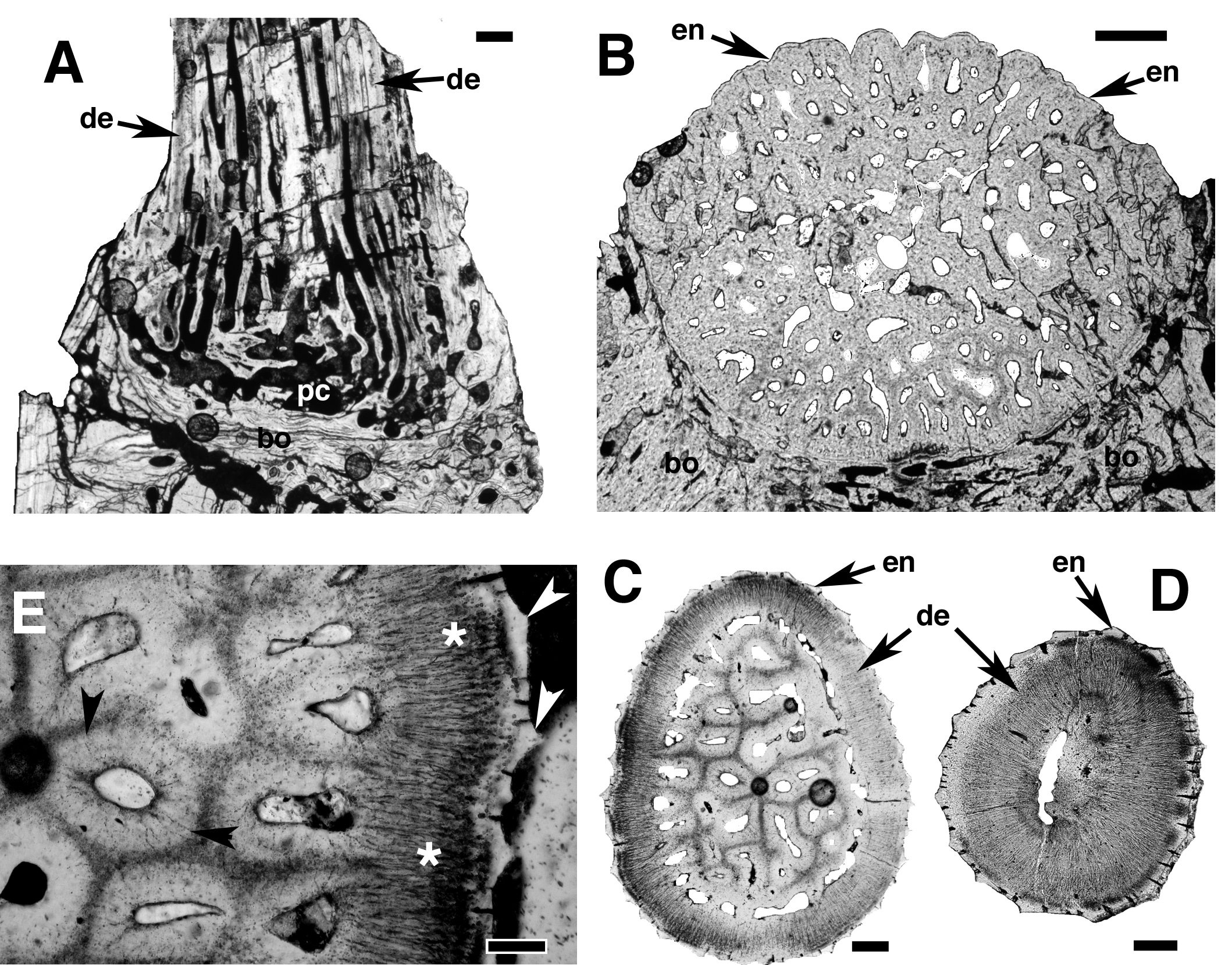Histological study of the oral teeth and their bony support in the Mexican Jurassic gar †Nhanulepisosteus mexicanus (Ginglymodii, Lepisosteidae)
Histological study of the oral teeth and their bony support in the Mexican Jurassic gar †Nhanulepisosteus mexicanus (Ginglymodii, Lepisosteidae)
Brito P.M., Alvarado-Ortega J., Meunier F.J. Histological study of the oral teeth and their bony support in the Mexican Jurassic gar †Nhanulepisosteus mexicanus (Ginglymodii, Lepisosteidae). Société Française d'Ichtyologie. Vol. 46, n° 1., 2022. pp. 013-018. doi: https://doi.org/10.26028/cybium/2022-461-002
The palaeohistology of the teeth and bony skeleton of the Late Jurassic gar †Nhanulepisosteus mexicanus is described in detail from thin sections. The teeth are composed of a cone of orthodentine with a pulp cavity filled with parallel canals of osteodentine as variety of eusthenodont type plicidentine. These conspicuous histological features differentiate †Nhanulepisosteus from the majority of extant and fossil lepisosteids. The teeth are crowned with a small apical cap of acrodine, and are surrounded by a ridged layer of enamel. The bony tissues contain star-shaped osteocytes and canaliculi of Williamson matching exactly those in living lepisosteids, other holosteans, and some basal teleosts. Although the dental histology is distinct from that of extant gar species, we consider these differences are related to eco-morphological factors, noting that this pattern of histological arrangement is also found in other fossil gar species.
Keywords: Bone - Jurassic - Lepisosteidae - Palaeohistology - Plicidentine - Teeth - †Nhanulepisosteus
Contact: Paulo M. Brito, Professor at the 'ERJ (University of Rio in Brasil), pbritopaleo@yahoo.com.br; François J. Meunier, Distinguished researcher at MNHN/BOREA, francois.meunier@mnhn.fr


